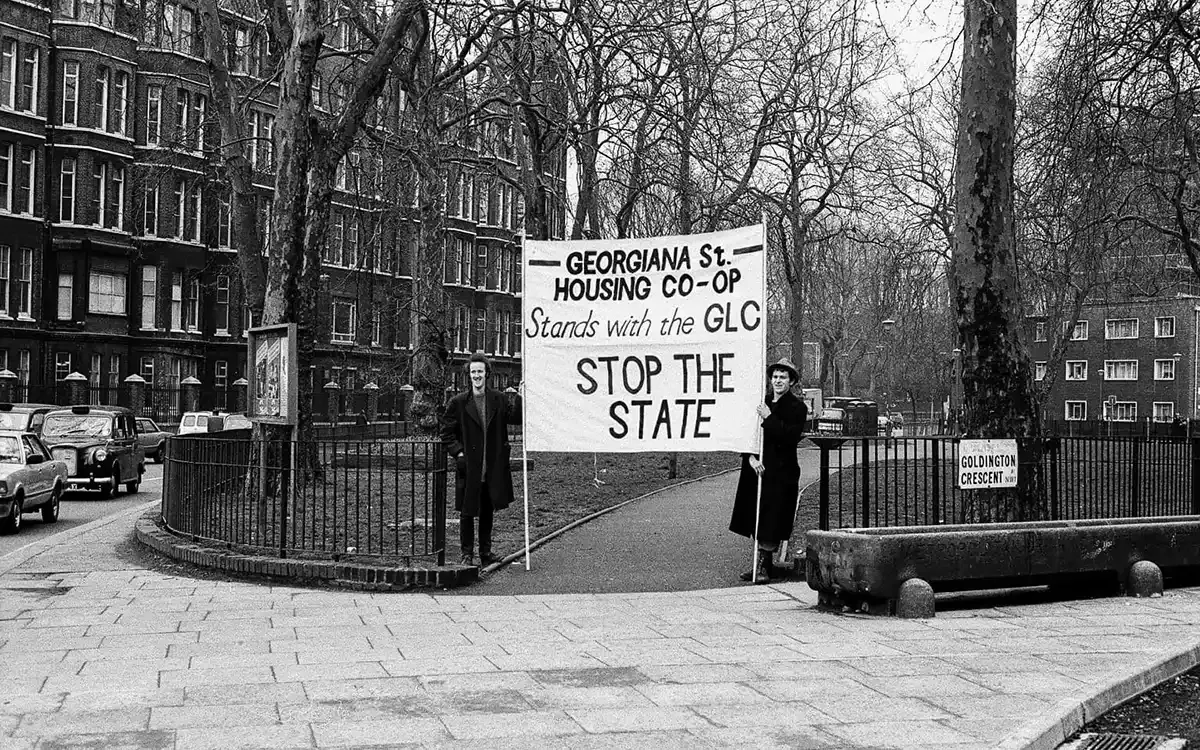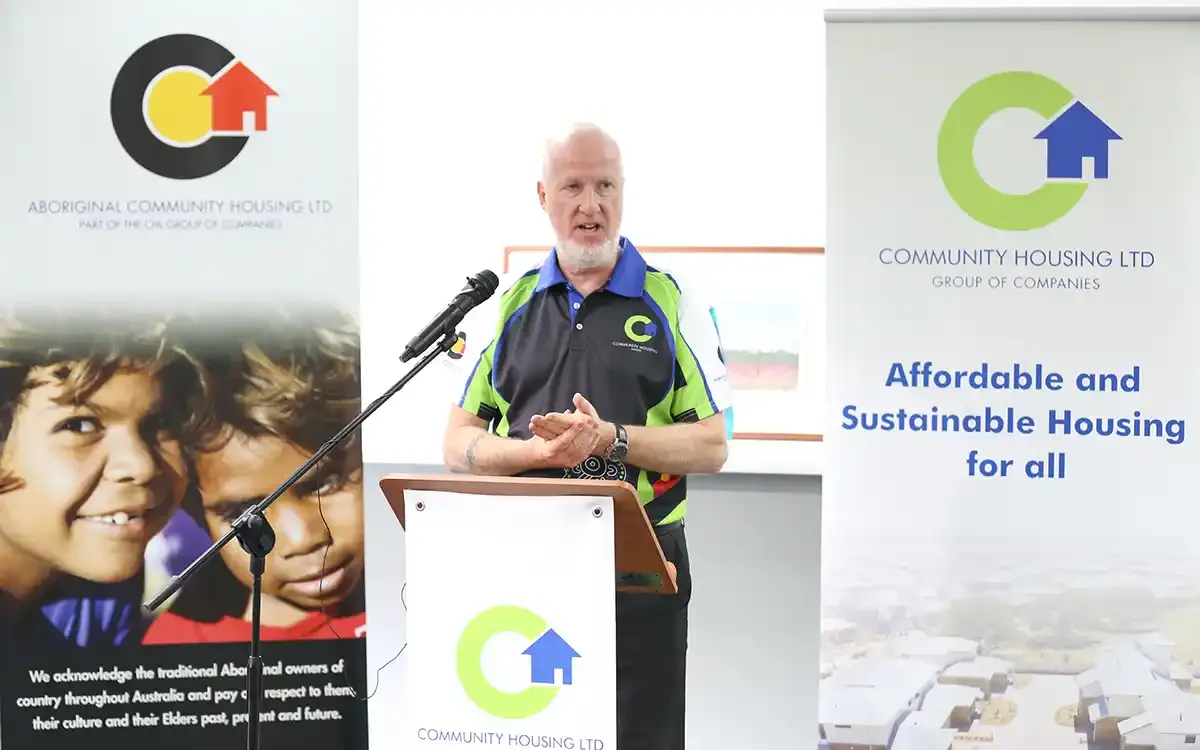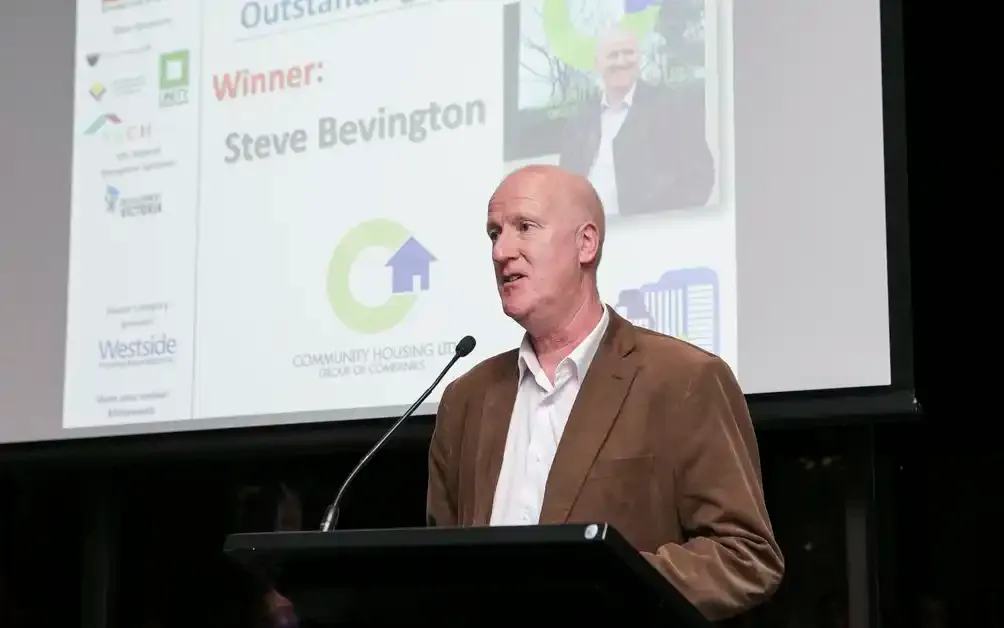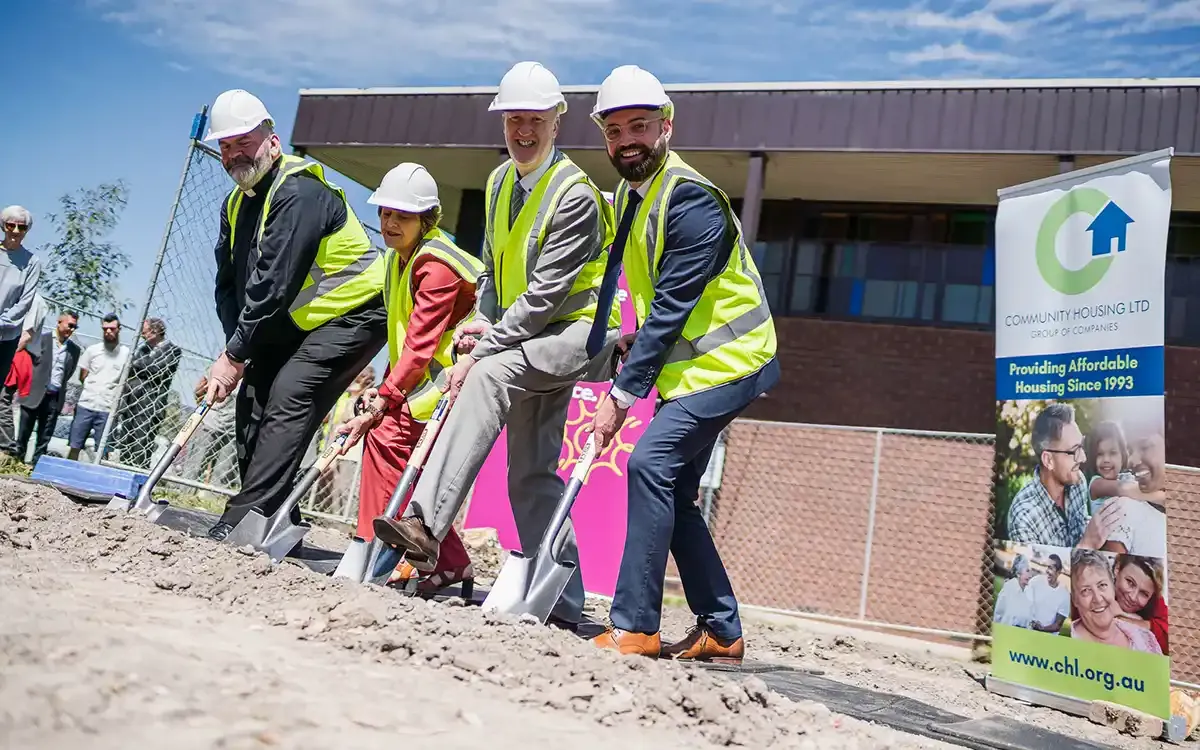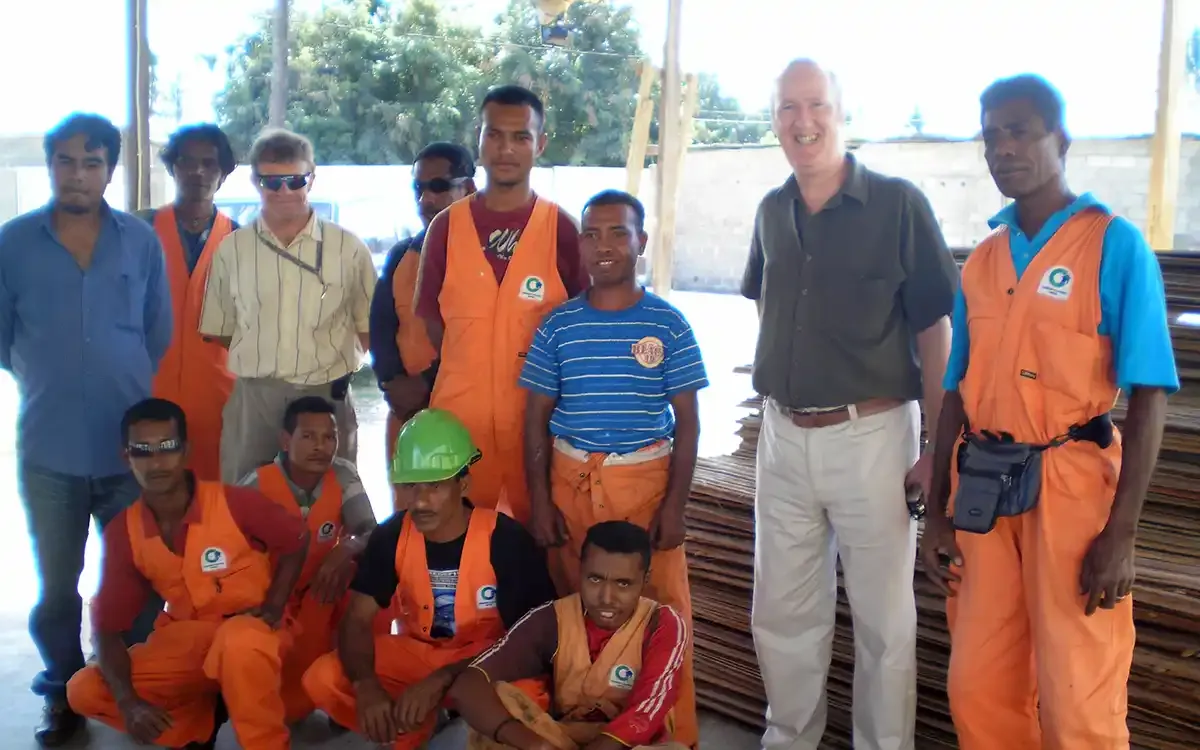Founder and Managing Director of Community Housing Limited, Steve Bevington, passed away unexpectedly in May 2024. Here, his Board colleague and former CHL Chair Fionn Skiotis remembers Steve and his unique contribution to community housing in Australia.
At a memorial service for Steve at Melbourne Town Hall in July, I described him as "a humble giant of the housing world". He had a very British reticence about awards and other gongs, and in our era of information overload and hype, he preferred to let his achievements, which were many and remarkable, speak for themselves. Chief among these was his key role in building the community housing agency he established, from a startup with no properties to a significant company with operations in every state and over 10,000 properties under management.
I had heard of Steve before I met him, in the rather parochial and gossipy world of the Victorian community housing sector in the early '90s. His arrival in this scene, following migration from the UK, was accompanied by wild rumours and half-truths. As the founder of a new and mysterious community housing organisation, Steve was painted by some as a corporate Machiavelli, with few moral scruples and secret plans to gobble up small housing groups.
"I was immediately struck by his intelligence and easy-going candour, accompanied at the same time by steely ambition and determination."
When I finally met him, he was clearly nothing of the sort. I was immediately struck by his intelligence and easy-going candour, accompanied at the same time by steely ambition and determination. These qualities were underlaid by the strongest of ethical bases. This was unsurprising perhaps for someone who had spent most of the 1980s as a housing activist striving to redress the ravages of the Thatcher Government on British society.
Steve’s focus was on building the community housing sector, and on genuine innovation. He had little interest in the small housing groups of that era, wedded as they were to the narrowly defined and, in many cases, outmoded funding programs. Though CHL did in time engage in mergers in the sector, this was never Steve’s primary aim, and he took some convincing about the merits of such moves before CHL would take the plunge.
Steve was a natural entrepreneur, who might have made a fortune in the private sector but chose instead to devote his considerable talents to not-for-profit work. In place of the business sector’s singular focus on profit, Steve had a tremendous passion for the more complex motivator of not-for-profit mission. This was always his primary consideration and spurred him, I think, to his most significant efforts and achievements.
Steve didn’t accept that the housing programs made available or offered by Australian governments at any particular time were necessarily the best or only way to achieve more and better community housing and/or address housing poverty. He had enormous capacity to identify the underlying issues and develop feasible and effective solutions. He also had the persuasive skills and drive to present those solutions to governments. While the required political will to adopt his ideas was not always present, there were regular breakthroughs, and Steve came to be recognised by most governments and statutory bodies as a source of well-reasoned expertise and sage advice.
Steve was a natural leader, with vision and smarts in abundance but also compassion and real gravitas – a quality he took seriously and could at times find wanting in others. He cared deeply about his staff team and everyone he worked with, and stories of Steve quietly encouraging, advising or assisting colleagues in need were widespread in the months after his passing. Always a fair and constructive boss, he was a wise mentor for many, enabling them to achieve significant career and personal goals.
He was certainly the hardest-working person I’ve ever known, giving of himself unsparingly and never failing or flagging, decade after decade – how he managed such a feat is hard to say. As CHL grew and became more complex, with operations in multiple Australian locations and eventually overseas, he seemed to be available for every meeting at any hour of the day or night, no matter where he was in the world.
A running joke at Board meetings was to ask him – attending online before COVID made this common practice – “Where are you now, Steve?”. The answer might be Peru, Rwanda, India or East Timor. The attendant time zone challenges never seemed to faze him, though it wasn’t always clear how he managed to sleep while dealing with a gargantuan workload and constant travel.
"Steve was a rare visionary founder who could both drive growth and manage the detail, as CHL’s operations grew ever broader and more complex."
CHL is far from the only not-for-profit organisation to have experienced rapid and sustained growth, but the challenges of successfully managing this year on year are hard to overstate. I’ve seen other organisations grow quickly, only to wobble alarmingly and in some cases crash, as a founder’s charisma and vision failed to provide or accommodate the less exciting but essential management and other systems required to keep everything in good working order. Steve was a rare visionary founder who could both drive growth and manage the detail, as CHL’s operations grew ever broader and more complex.
CHL’s engagement in developing housing overseas was arguably one of Steve’s most daring innovations – unique in the Australian community housing sector, and still unique today. Though pursuing viable affordable housing growth in developing countries was, and is, an enormous challenge - and CHL’s record overseas cannot be compared with its successes in Australia, with all honesty - I’m pleased to have played a small part in introducing Steve to such endeavours.
Working at the time for a housing rights organisation, I invited Steve to East Timor to see the country’s myriad housing issues for himself. He visited and took everything in with his usual intellect and insight. When I asked him after the trip if CHL would contribute to these efforts, his answer was typical – CHL didn’t donate to others but would take on the challenges itself. It did precisely that, and today – two decades later – has a proud record of significant project development and the employment and training of hundreds of local people in construction.
"For Steve, CHL’s vision of a world without housing poverty meant precisely that – people in need should be housed, no matter where they might be on the planet."
CHL’s engagement would extend to seven countries, in each of the global regions Steve understood as having the most significant housing need. For Steve, CHL’s vision of a world without housing poverty meant precisely that – people in need should be housed, no matter where they might be on the planet.
Steve was a colleague for over 30 years, a fellow Board director for over 20, and someone I’m proud to have called a friend for around half my life. He was even briefly my boss, for a matter of weeks in 2001, when he headhunted me from another community housing role. A month or so after starting at Box Hill, I was offered what seemed a dream job, so I gave notice. Steve was not surprisingly unimpressed by that – CHL had an extremely high staff retention rate, which he was extremely proud of – but after his momentary annoyance, he suggested I might make amends by joining the CHL Board. In reality, this was no hardship, and I happily stepped up to the role.
Being on the Board of CHL was an exhilarating, roller-coaster ride in those days, as we non-executive directors hung on for dear life while CHL grew and grew under Steve’s magic touch. Despite its Managing Director’s drive and commanding knowledge of the sector, CHL was no staff-captured organisation. Steve was always at pains to ensure proper governance procedures were observed and applied throughout the CHL Group, even when this required a huge commitment of his scarce time in preparing Board reports and attending numerous meetings.
"Steve was suspicious of plaudits and gongs, and disdainful of those who celebrated them, particularly if their records were self-evidently meagre."
As noted, Steve was suspicious of plaudits and gongs, and disdainful of those who celebrated them, particularly if their records were self-evidently meagre. I recall his mocking scorn for one high-ranking bureaucrat from a certain state who had arranged things so visitors to his office were forced to pass through a corridor bedecked with trophies and prizes – this was the same individual who had sought to hold up the development of community housing in his state at every turn. I can still see Steve’s sourly unimpressed face now; according to his maxim that one’s achievements should speak for themselves, this chap had little about which to boast.
Steve passed away without much in the way of formal recognition – no Order of Australia for him. This might seem unfair on the one hand, given his immense achievements compared to many of those so awarded, but it is also quite fitting. For Steve, the only meaningful record for anyone working in housing was the number of homes built and people and families housed. On this measure, it’s clear Steve stands as one of the most significant and successful contributors to the Australian housing sector. The legacy of this former squatter and activist who came to Australia as an adult migrant––a significant obstacle in itself––is, I feel, a proud one that speaks, appropriately, for itself.
"My way of coping with his loss is to recommit myself to the mission that Steve devoted himself so wholeheartedly and successfully."
I’ll miss Steve and I know many others in the sector will feel the same way. His untimely departure has left what is at times an aching hole in our world. But I feel Steve was an unsentimental person, and he would have wanted everyone involved in the sector to get on with things the best we know how. My way of coping with his loss is to recommit myself to the mission that Steve devoted himself so wholeheartedly and successfully.
With that commitment in mind, it’s worth noting CHL is now completing a deep and detailed review of its overseas operations, with a view to ensuring its efforts and resources achieve the greatest impact where they are needed most. While this might seem insensitive to Steve’s legacy, I believe the opposite to be true – Steve would have been the first to agree that nothing should remain in place simply because things have been done that way over a certain period of time. Recalibration and adjustment to ensure maximum impact are not only appropriate but essential in any housing operation.
CHL is now in the process of establishing the Steve Bevington Foundation, to keep alive his name and CHL’s vision of a world without housing poverty in the developing nations of the world he visited so regularly and cared for so deeply. Rather than engaging in direct on-the-ground operations, the Foundation will partner with local organisations and charities overseas to continue addressing housing needs and advocating for improved housing policy. This transition will be handled transparently and respectfully, and it will be phased in over time.
I see the Foundation as providing the vehicle for CHL’s revitalised and more impactful engagement with partners and housing issues overseas. Support for and engagement with its work, when established, will be welcome from all.
The ahi: wishes to acknowledge Steve Bevington's support of the Institute across the years,
including this linked article in the first edition of our relaunched HousingWORKS in 2023. His shock passing is a huge loss for the social, affordable and community housing sector. Our thoughts and respects go to his friends, family and colleagues.
Share This Article
Other articles you may like




